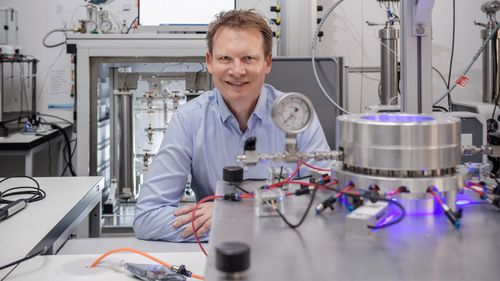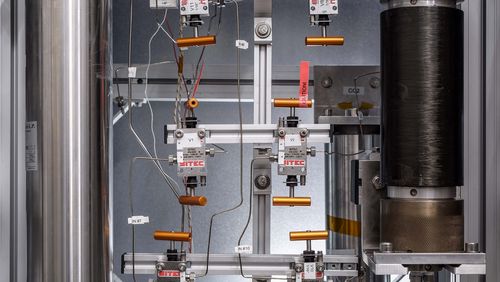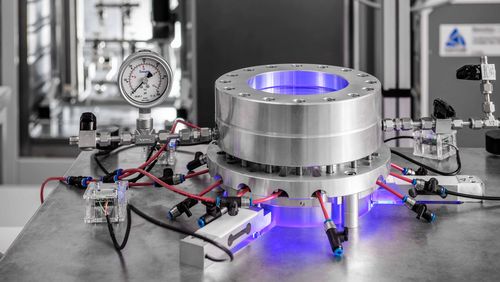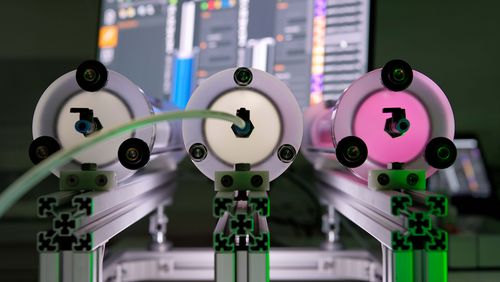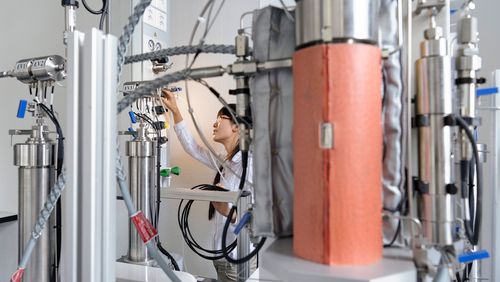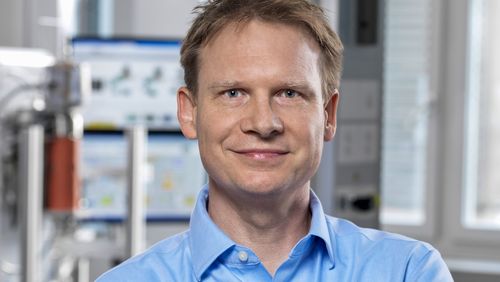
Deep geothermal energy research
The intense heat in the interior of the Earth is one of the planet’s least-used energy reserves. Professor Martin O. Saar and his team at ETH Zurich are exploring ways to harness this energy and generate electricity on a large scale – with funding from the Werner Siemens-Foundation. In addition to having the potential to produce large amounts of electricity, the innovative technology has the added benefit of reducing carbon emissions.
Werner Siemens Foundation Endowed Chair Martin O. Saar and his team at ETH Zurich have developed an innovative method for tapping into the energy in the earth’s crust and simultaneously capturing the greenhouse gas carbon dioxide. What’s more, the procedure will work in Switzerland’s extremely hard subsurface as well as in other geologically difficult areas.
In his research, Werner Siemens Foundation Endowed Chair Martin O. Saar wants to find ways to harness the earth’s heat and use it to generate electricity in geothermal power plants. In Switzerland, the past few years have seen a major increase in federal funds invested in deep geothermal energy, which is being discussed as an alternative energy source for after the phase-out of atomic power and fossil-fuel energy production.
Although generating electricity from deep geothermal energy isn’t feasible in Switzerland, the situation is different in Germany, while the US is a global leader in geothermal power plants. Different geological conditions are the reason. Switzerland lacks the high subterranean temperatures near the earth’s surface that are easier to tap into, and the volatile seismic activity of Iceland or California that keeps the subsurface porous for heat transfer isn’t a characteristic of the hard granite in Alpine areas. Indeed, in Switzerland and most other areas of the world, it’s much more difficult to access the earth’s heat and then convert it into electricity. This is where Martin O. Saar’s research comes in: he wants to make cost-effective geothermal power production possible in previously inaccessible areas.
In a first step, Martin O. Saar and his team conducted computer simulations, lab experiments and field research in the rock layers in order to study how geofluids make their way through hard rock like granite and to better understand how geothermal energy flows “move” in the earth’s crust. The team came upon the idea of using carbon dioxide to transport heat a few years ago – and it’s proven to be a major coup. Not only is CO2 an ideal fluid for accessing geothermal heat at many different geological sites, but permanently storing the greenhouse gas underground is also a way of reducing carbon dioxide levels in the atmosphere.
The project and its innovative approach has met with success, with numerous patents, international partnerships and spin-off companies having already resulted from the work. A novel electropulse drill was also developed in collaboration with geothermal power plant builder SwissGeoPower and then successfully tested. In 2021, Saar received an Innosuisse Grant from the Swiss Innovation Agency, which he will use to optimise the highly promising electropulse drilling technology.
Facts and figures
Project
Headed by Professor Martin O. Saar, the research group Geothermal Energy and Geofluids at ETH Zurich is exploring ways to harness geothermal energy and transform it into an economically viable source of electricity. One of the procedures is based on the innovative and climate-friendly idea of using CO2from the Earth’s interior and linking it to technology to store CO2in underground reservoirs.
Support
Over a period of 10 years, the Werner Siemens Foundation is funding a professorship for geothermal energy at ETH Zurich through a donation to the ETH Zurich Foundation; the funds cover daily operations as well as five research positions. The group examines reactive fluids and the flow of geothermal energy in the Earth’s crust using computer simulations, lab experiments, field research and research in rock layers.
Funding from the Werner Siemens Foundation
15 million Swiss francs (2025–2034)
10 million Swiss francs (2015–2024)
Project duration
2015–2034
Project leader
Prof. Dr Martin O. Saar, ETH Zurich
Partners (selection)
Swiss Competence Center for Energy Research – Supply of Electricity
Geo-Energie Swiss
SwissGeoPower Engineering AG
TerraCOH Inc.
Haelixa
University of Minnesota, Dept. of Earth Sciences
Lawrence Berkeley National Lab
Lawrence Livermore National Lab
Federal Office of Topography swisstopo
US Geological Survey
Columbia University, NYC
Minnesota Geological Survey
EPF Lausanne
Universities of Neuchâtel, Geneva and Bern
Graz University of Technology
Technical University of Munich
Karlsruhe Institute of Technology



